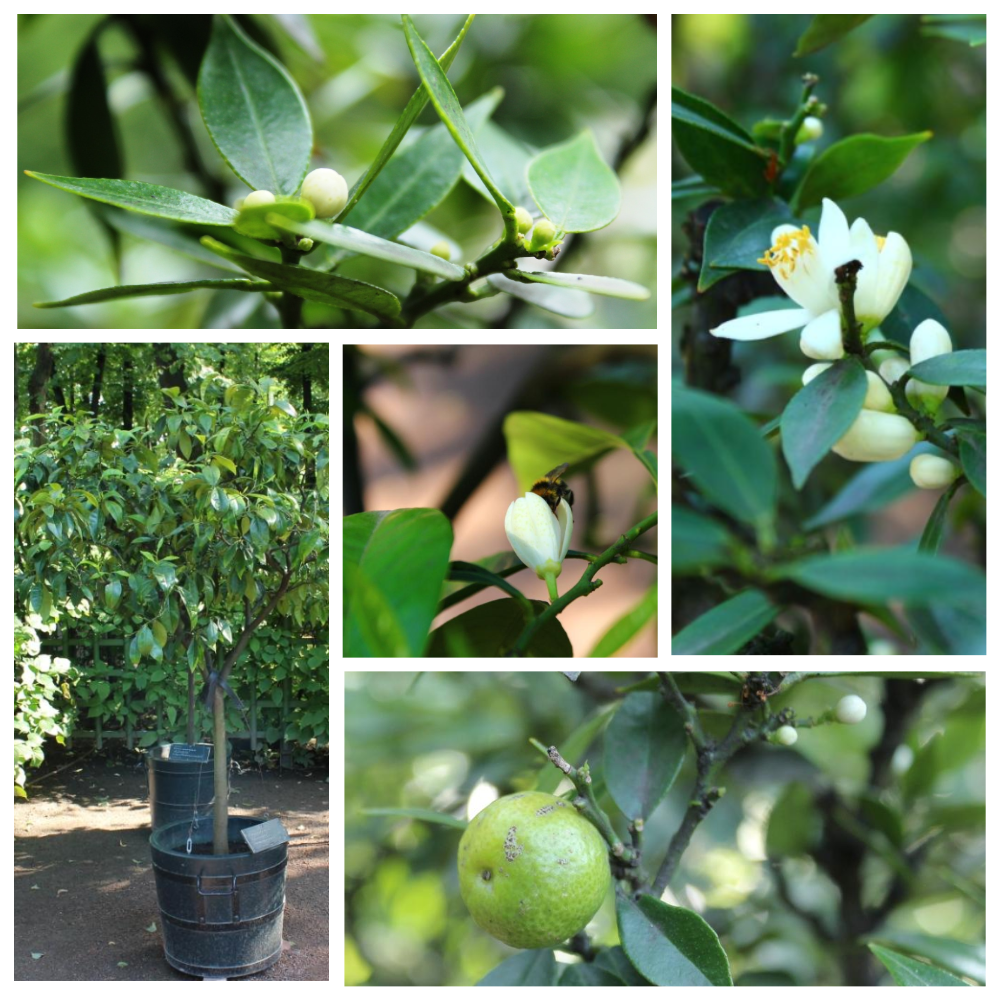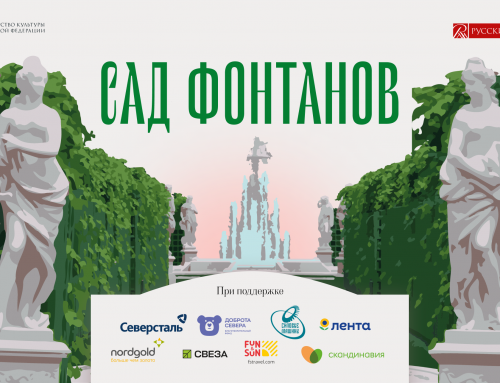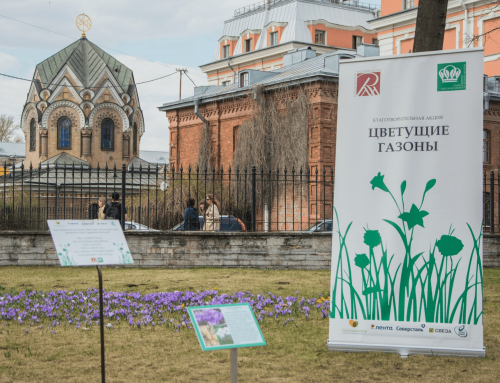Want to know real smell of orange? Hurry to the Summer Garden!
Malo kto znayet, chto Letniy sad obladayet svoyey kollektsiyey kadochnykh – oranzhereynykh rasteniy, boleye 100 shtuk. Zimoy i osen’yu oni pryachutsya v vosstanovlennoy v 2012 godu Maloy oranzhereye, a letom ukrashayut parter i boskety sada. Bol’shuyu chast’ etikh rasteniy sostavlyayut tsitrusovyye derev’ya: limony, fortunella, apel’siny i, konechno zhe, pomerantsy, tsveteniye, kotorykh vsegda proiskhodit v aprele, v zakrytoy dlya posetiteley oranzhereye. I lish’ inogda, v kontse leta, u tsitrusovykh rasteniy sluchayetsya remontantnoye – vtoroy raz za sezon, tsveteniye. Eto leto dlya pomerantsev stalo naiboleye blagopriyatnym!
Pomeranets ili, kak yego yeshche nazyvayut, «chinotto», «bigardiya» (Citrus aurantium L.) – vechnozelenoye nevysokoye derevo iz semeystva Rutovyye (Rutaceae). Pomerantsy – blizkiye rodstvenniki apel’sinov, no myakot’ ikh oranzhevykh nekrupnykh plodov kislo-gor’kaya na vkus, poetomu u etogo rasteniya yest’ yeshche odno nazvaniye – gor’kiy apel’sin. Rodinoy pomerantsa schitayetsya Yugo-Vostochnaya Aziya.
V Yevrope pomerantsevyye derev’ya kul’tivirovali, vo mnogom blagodarya tsvetam i ikh udivitel’nomu i zapominayushchemusya aromatu, pod nazvaniyem flordoranzh (fr. fleurs d’orange – «tsvetok apel’sina»). Flordoranzh byl traditsionnoy chast’yu svadebnogo buketa i podvenechnogo ubora nevesty, simvolom devich’yey nevinnosti. Nastoy iz tsvetkov – «pomerantsevaya voda» shiroko primenyalsya v parfyumerii i byl populyaren kak aromatnyy napitok. V nastoyashcheye vremya v Amerike, stranakh Yevropy pomerantsevuyu vodu dobavlyayut v testo dlya izgotovleniya desertov, v kofe i kokteyli. Takzhe primenyayetsya pomeranets i v lechebnykh tselyakh – yego ispol’zuyut pri izgotovlenii nekotorykh lekarstv.
V Rossiyu pomerantsy privozyat iz Yevropy v nachale XVIII veka i s tekh por pomerantsy i drugiye tsitrusovyye stanovyatsya izlyublennymi rasteniyami v imperatorskikh sadovykh oranzhereyakh Sankt-Peterburga.
The summer of 2017 never ceases to amaze. In the Summer Garden in the Red Garden bosquet, an unprecedentedly abundant, second time in a year, the orange trees bloom!
Few people know that the Summer Garden has its own collection of hothouse – greenhouse plants, more than 100 pieces. In winter and autumn, they hide in the restored Greenhouse in 2012, and in the summer decorate the stalls and the garden bosquets. Most of these plants are citrus trees: lemons, fortunella, oranges and, of course, oranges, flowering, which always occurs in April, in a greenhouse closed to visitors. And only sometimes, at the end of summer, citrus plants happen repair – the second time in a season, flowering. This summer was the most favorable for the Pomeranians!
Pomeranian, or, as it is also called, “chinotto”, “fagot” (Citrus aurantium L.) – evergreen low tree from the family of Rutaceae. Pomeranians are close relatives of oranges, but the pulp of their orange medium-sized fruits is bitter-sour, so this plant has one more name – a bitter orange. The homeland of the orange is Southeast Asia.
In Europe, orange trees were cultivated, thanks in large part to the flowers and their amazing and memorable aroma, called flør d’orange (“fleurs d’orange”). Fleordorange was a traditional part of a wedding bouquet and a bride’s wedding dress, a symbol of maiden’s innocence. Infusion of flowers – “orange water” was widely used in perfumery and was popular as a fragrant drink. Now in America, the countries of Europe, orange water is added to the dough for making desserts, coffee and cocktails. Also used pomeranets and for medicinal purposes – it is used in the manufacture of certain medicines.
In Russia, oranges are imported from Europe in the beginning of the XVIII century and since that time oranges and other citrus fruits have become the favorite plants in the imperial garden greenhouses of St. Petersburg.








